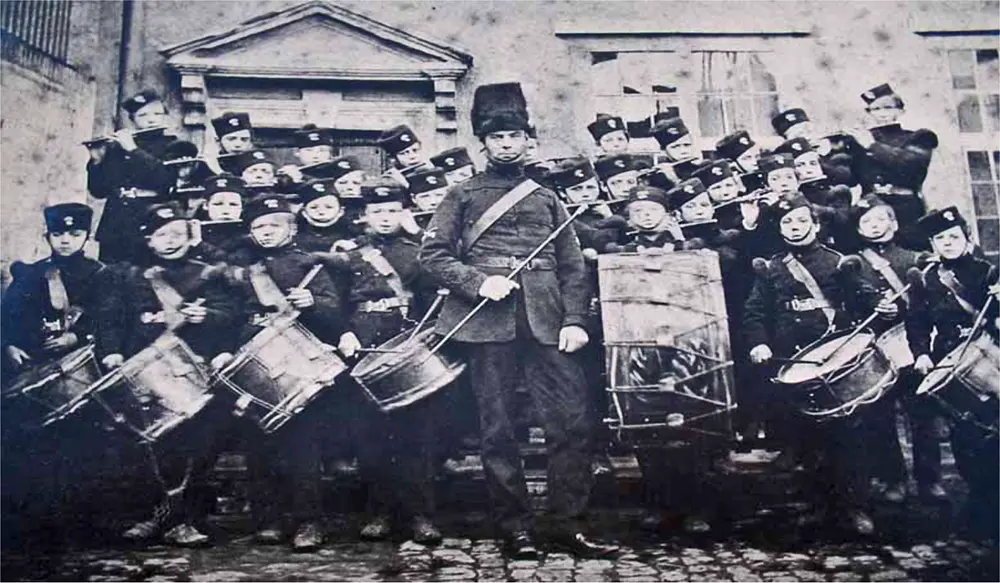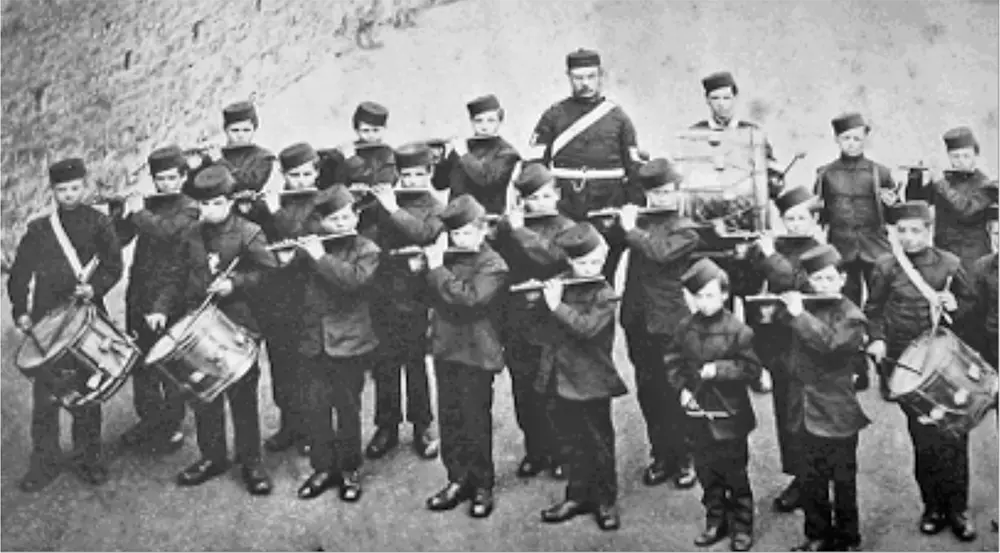Gloucestershire Volunteer Artillery Bands
Introduction
Many of the records of the artillery of Bristol were lost or destroyed during World War 1. The work of collecting and compiling the records of the unit from its formation carried out in the 1931 by Serjeant Major, Instructor In Gunnery, Brigade Regimental Serjeant Major, F. Healy from the official war diaries filed in the record office and from notes news cuttings and publications. Major J. Smith RA (V) MBE TD wrote the article "The Bristol Gunner Tradition." Derek Driscoll put both articles on his "The Bristol Gunner" website and this page is based on that.
As Major Smith wrote, "Regrettably a comprehensive history of the Volunteer Artillery Movement in Bristol has yet to be written. The task of unraveling the kaleidoscope of amalgamations that went to produce the ancestry of the present Gloucestershire Volunteer Artillery unit needs more investigation to make it complete. The following is intended as a starting point for further research in the future."
From the beginning the Gloucestershire Volunteer Artillery supported a band. by donation and voluntary subscription, officers of the Corps paid an annual subscription of £2, 2 shillings towards them. The Bandmaster was Mr. J. H. Hirst and the Band Leader was J, O. Brooks.
The Bands

Gloucestershire Volunteer Artillery Drum and Fife Band
The Grenade Hat Badges in white Metal and the crossed swords on the right arm of the bandmaster denoting the rank of Corporal. The shoes are not clean and it looks as if the have been playing a game, the Bandmaster’s are clean.
The bandmaster when the above photow as taken was Mr. Midwinter, so was after September 1868.

Gloucestershire Volunteer Artillery Drum and Fife Band
The Bandmaster is now a Sergeant and the boys shoes are now clean, but wear no badges in their pillbox hats.
In September 1868, Mr. Midwinter was appointed Bandmaster.
On Easter Monday, 29 March 1869, Clevedon Pier had an gala opening - "Finally assembled, a great procession left the terminus, consisting of twelve policemen, fifty-four members of the Clevedon Artillery and Band, ninety-four Nailsea Engineers and their Band, the directors of the Clevedon and Weston Pier Companies, twenty-eight members of the Committee of Demonstration, inhabitants and visitors, the Bristol Artillery Band, ninety Odd Fellows, the Axbridge Drum and Fife Boys, and five hundred school children."
The wesbite Brass Band Results has a single entry for the Gloucestershire Volunteer Artillery. It is confusingly entered as Gloucestershire Volunteer Artillery (Cinderford), and that on 31 March 1902, the band came fourth at a contest in Lydney.
1st Gloucestershire Volunteer Artillery R.G.A. has just one bandsman on the surviving Nominal Roll of 1897/98. That is an A. D. Watts, who had the Regimental number 4361. He was promoted to Bombardier on 26 March, 1904. On the same day, Bombardier Blann and Musician May were promoted to Corporals.
The Gloucester Battery (No. 3) had two bandsmen on its Nominal Roll between 1900 and 1908, the bandmaster was named Dawes, and a bandsman was named E. Middleton. Another was named E. Johns who played in their rugby football team.
When the Corps became the 1st South Midland Brigade on 1 April 1908, under the Territorial Force scheme the establishment did not include a band, but the band was continued and was formed with members from the battery establishments. On mobilisation the band were broken up and the members resumed their normal duties in their allotted batteries.
Sources and Resources
Derek Driscoll's original pages
Historical-Records-1859-1914 (PDF, 3.64Mb)
Historical Records of 66th (South Midland) Field Brigade R.A. (T.A.)
Historical Records of 66th (South Midland) Field Brigade R.A. (T.A.)
Other Resources
Amateur Brass and Wind Bands in Southern England Between the Late Eighteenth Century and Circa 1900 - Michael John Lomasq B. A., P. G. C. E. - Doctorial Thesis for Open University, April 1990
Gloucestershire Volunteer Artillery (Cinderford) - Brass Band Results
Militia and Volunteer Wind Bands in Southern England in the Late Eighteenth and Early Nineteenth Centuries - Journal of the Society for Army Historical Research , Autumn 1989, Vol. 67, No. 271 (Autumn 1989), pp. 154-166
Vintage Brass Band Pictures - Internet Bandsman's Everything Within. Some nice photos of old military bands, unfortunately none of the GVA.
